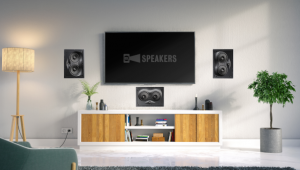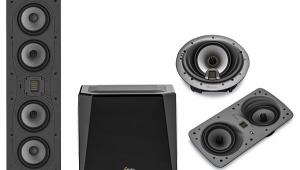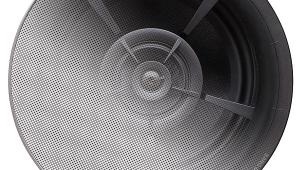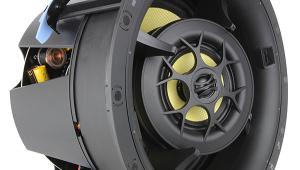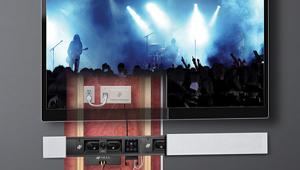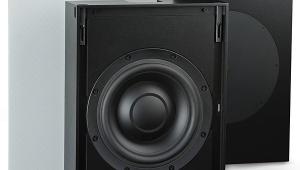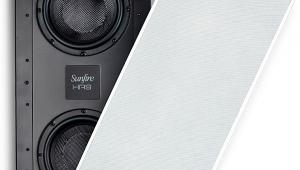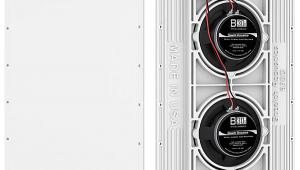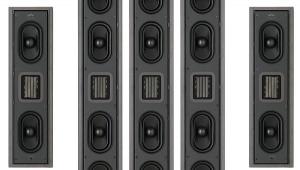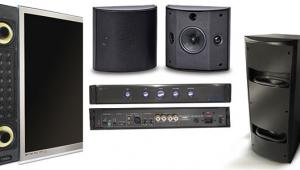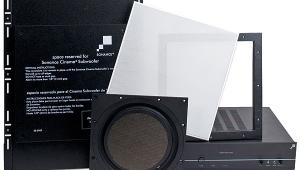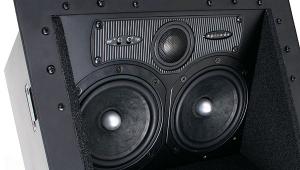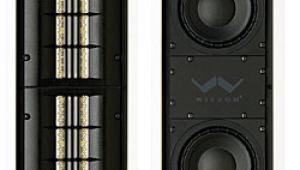Episode ES-HT700 In-Ceiling Speaker System Page 2
Back Box Benefits
Those Stratosphere 7005—sorry—ES-HT700-ICLCR-5 speakers come built into an 8-inch-deep back box made from 0.75-inch MDF (medium-density fiberboard). As you might already know, back boxes do wonders for in-wall/inceiling speakers. They allow the engineers to design the speaker around a fixed set of enclosure parameters, and they eliminate most of the vibrations off the back of the drivers that are often transferred to the wall of the adjacent room or the attic space. In the case of the ES-HT700-ICLCR-5, the enclosure has the added benefit of allowing the front baffle to be angled inward, like an inverted V, with the drivers facing down into the listening area at a 45-degree angle.

The ES-HT700-ICLCR-5’s two 5.25-inch NCS (natural cell structure) midbass drivers use Kevlar-impregnated paper as the cone material. (Kevlar impregnated? Wasn’t that how Superman was conceived?) These drivers are fixed in position. (If they’re “fixed,” how could they be impregnated? Ah, the sweet mysteries of engineering.) The single 1-inch titanium catenary-shaped dome tweeter pivots, allowing you to compensate for the fact that you normally don’t mount in-ceiling speakers at an angle like you would toe-in a floorstanding speaker. Episode chose to use a catenary-shaped dome tweeter over an equivalent standard dome because of its potentially superior off-axis response—a feature Episode believes is ideal for in-ceiling application. To control reflections, a black, acoustically absorbent material covers the rear half of the V-shaped baffle. Each speaker also includes room-acoustics compensation switches for the tweeter and woofers plus a magnetically attached white, square grille. While they’re not what I would consider ugly, the grilles are a bit industrial looking. Perhaps it’s the absence of a visible flange—or maybe I’m just not used to square speaker grilles on the ceiling. One thing I will say about those grilles: Once they’re on, they’re on. Those magnets are strong buggers.
At 14.3 by 14.3 by 8.5 inches and 17.6 pounds each, these speakers aren’t for the weak and the wimpy when it comes to installation. I managed to go solo and install them without assistance—but just barely (and only because I’m that good). Of course, you won’t see any of this heft since it all resides in the ceiling, but I mention it to point out that this is one serious custom-install speaker. Unlike many of its counterparts, the ES-HT700-ICLCR-5 is built more like a good bookshelf speaker than a CI speaker.

Not Your Father’s In-Ceiling Speaker
Funny thing about these speakers: They sound more like a freestanding speaker than the typical CI speaker. The overall impression I got when I listened to music, whether it was multichannel or two-channel, was how smooth and clear these speakers are. The first reaction from those who’ve had the chance to hear the ES-HT700-ICLCR-5s installed in my theater is, “Wow, those are in-ceiling speakers?” For example, on the Chris Botti in Boston Blu-ray, the trumpet comes through amazingly smooth and natural. And on “I’ve Got You Under My Skin,” when Botti is joined by Katharine McPhee, there’s not a bit of harshness in her voice. The imaging is great, and the soundstage is wide—not quite what you’d get with freestanding speakers, but very impressive for in-ceiling models. The depth of the soundstage is limited but great for an in-ceiling speaker. The speakers also did a fantastic job with Jeff Beck’s excellent Emotion & Commotion disc. Even when I played the system fairly loud, the tweeters never showed a hint of trouble handling the extremes of Beck’s electric guitar. As you’d expect with the vocal experience on the Botti disc, the ES-HT700-ICLCR-5s handled dialogue exceedingly well. Although it’s filled with explosive bursts, Watchmen has a large amount of dialogue from a diverse array of characters. Every word came through stunningly well, even Rorschach’s raspy rumblings.
- Log in or register to post comments
